16 Facts You Need To Know About Cinnamon
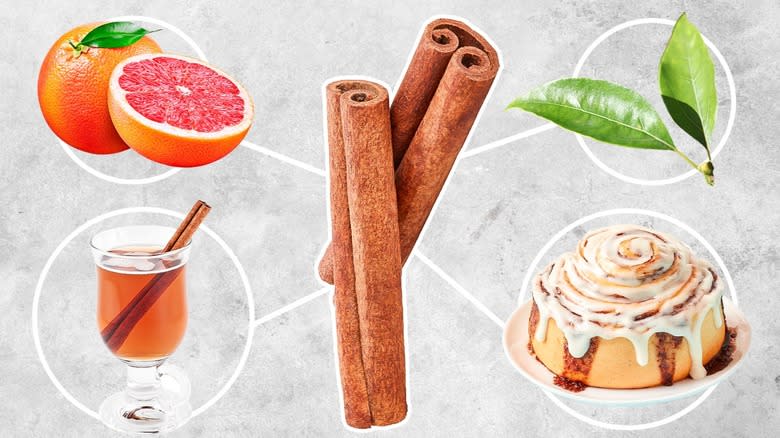
If the warm, sweet aroma of cinnamon evokes pleasant memories of freshly baked pie, Christmas markets, and homey comfort for you, you're not alone. In fact, this ubiquitous spice has been around for so long that it practically transcends time and space. Taking a trip down cinnamon's memory lane, you'll find ancient legends surrounding it, a dark colonial history, a laborious production process, a conquest of the global palate, and, finally, its transformation from luxury item to everyday ingredient featured in seasonal desserts and Internet challenges.
It's easy to take cinnamon for granted, as a result. But if it weren't for cinnamon's sweet and spicy flavor profile, plenty of dishes wouldn't exist -- or they certainly wouldn't taste the same, at least. Cinnamon agrees with sweet and savory ingredients, contributing depth and richness to everything from baked goods and desserts to curries and stews. You'll be hard-pressed to find a cuisine that doesn't feature at least one cinnamon-laced dish. And its health benefits are legendary -- but so is its toxicity. Intrigued? Read on to unearth more facts about cinnamon.
Read more: 30 Types Of Cake, Explained
It's One Of The First Spices To Ever Be Used

When we bite into a freshly baked cinnamon roll, we rarely stop to appreciate how many generations before us have revered its key ingredient. Cinnamon is widely believed to be the first spice that entered the vocabulary of ancient civilizations; it's been around since 3000 B.C. However, its first uses were not culinary. Ancient Egyptians used cinnamon to preserve the bodies of the deceased, and it was a common ingredient in Greek perfumes, medicines, and ointments. Later, the Bible described the alluring scent of cinnamon oil and incense, highlighting its spiritual significance.
Throughout its ancient travels around the world, cinnamon was regarded as a luxurious status symbol. This is attested to by Pliny the Elder, a Roman historian who lived in the first century. In his time, a pound of cinnamon cost an average laborer's whole year of earnings. It wasn't until the late stages of the Roman Empire that its price dropped, and it was introduced to the culinary realm.
Ancient Greeks Believed Cinnamon Came From Birds

These days, discovering the origin of cinnamon takes a few clicks. Type "Where in the world does cinnamon come from?" into a search bar, and you'll immediately learn of its tree bark origins and travels from India and Sri Lanka to ancient Egypt and the Roman Empire. But for ancient Greeks, a plant as storied and exotic as cinnamon was overgrown with cryptic legends.
Greek historian Herodotus wrote of bat-like creatures guarding the valuable plant, which grew in a shallow lake. He also offered another origin story: Giant birds used cinnamon to build unreachable nests, and Arabian locals tricked them by offering large pieces of meat. The overstuffed nests would fall, leaving cinnamon ripe for the taking. A century later, Aristotle relayed a similar story in his "History of Animals." The nests, he said, were brought down by weighed arrows. However, Pliny the Elder skeptically denounced the cinnamon bird myth in his "Natural History" as a clever price-raising ruse of the cinnamon traders.
Its Later History Is Rooted In Colonialism

Cinnamon's history, particularly that of Ceylon cinnamon hailing from Sri Lanka, is a tale of colonial power plays. The Portuguese, Dutch, and English vied for control over its production and trade for almost five centuries. Colonial powers ruthlessly exploited local communities and established monopolies in their quest for the highly sought-after spice.
Among the many crimes committed during Portuguese rule over Sri Lanka was the branding of the Salagama community -- already involved in cinnamon production -- as the descendants of slaves, in order to justify exploitation. In 1658, The Dutch helped Sri Lankans push the Portuguese out -- only to establish their own brutal order. They introduced laws that prevented people from escaping a cinnamon-peeling fate, tortured those who attempted to flee, and deliberately created a shortage by burning heaps of cinnamon to maintain their monopoly. Even under British rule, Sri Lanka's spice trade and governance bore the scars of exploitation, and to this day, cinnamon peelers are severely underpaid for their extremely hard work.
There's More Than One Type Of Cinnamon
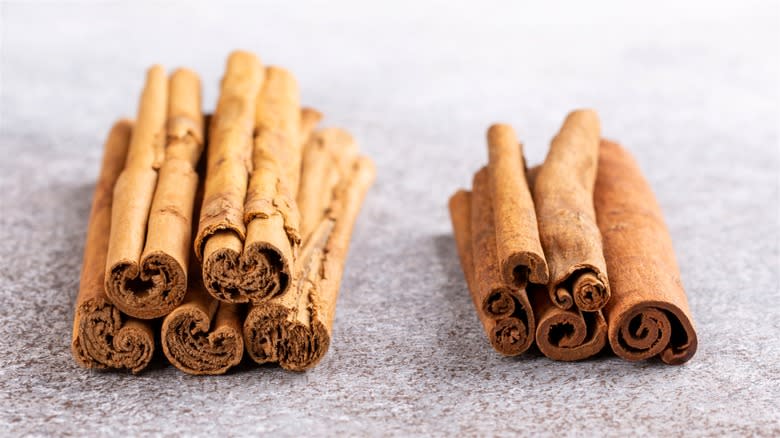
Most of us encounter cinnamon in powdered form, which obscures its origins. Yet even looking at a cinnamon stick doesn't necessarily conjure an image of a tree whose bark is the source of the beloved spice. In fact, cinnamon doesn't come from one tree, but a whole Cinnamomum family, each member of which is used to produce a different type of cinnamon.
The cinnamon sticks you'll likely find on a supermarket shelf are usually a kind of cassia. They're differentiated by their low price point, tough single-layer scrolls, mahogany hue, and pronounced cinnamon flavor. The mild, sweet Indonesian cassia or Korintje cinnamon comes from Cinnamomum burmannii, and is most often used in baked goods in the U.S. Vietnamese cassia, or Saigon cinnamon, is stripped from Cinnamomum loureiroi, which boasts a high essential oil content and a vibrant, spicy-sweet taste. Finally, there's Chinese cassia, reserved for medicinal use. But there's only one "true" cinnamon. Hailing from Sri Lankan Cinnamomum verum trees, the thin-layered quills of Ceylon cinnamon are delicate both in appearance and flavor.
Cinnamon Sticks Are Curled For A Reason
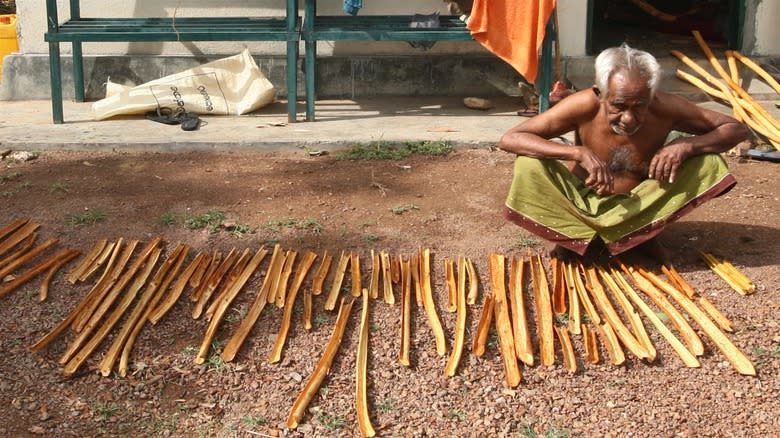
As you examine the fragrant piece of tree bark in your hot toddy, you might wonder why cinnamon sticks are curled. The answer lies in their journey from tree to table. As a "true" cinnamon tree reaches its second birthday, farmers reduce it to a stump, which then grows tender branches like a bush. These shoots are harvested the following year. Cut down in the early morning, they are soaked in water and subjected to laborious peeling. Once the sturdy outer bark is removed, the workers continue to peel the inner bark in thin layers. Also known as quills, these pieces of bark are transferred to a shady spot for several days and finished off in the sun, which makes their edges curl up naturally.
Cassia comes from 8 to 15-year-old trees and requires much less processing. Made from the outer bark of trees with the hard gray skin scraped off, cassia quills are tougher, but curled just the same -- they, too, undergo sun-drying.
Cinnamon Can Be Both Toxic And Good For You
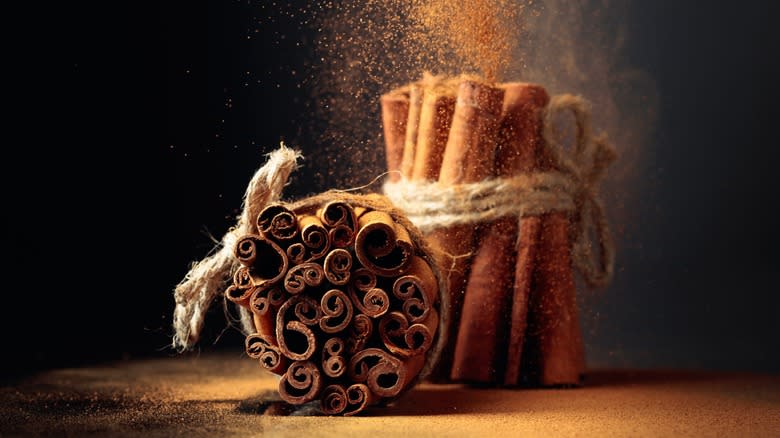
Once in a while, a headline like "You Should Eat Cinnamon Every Day. Here's Why" will pop up on your screen, advertising the spice's numerous health benefits. Among them, you'll typically find the ability to fight inflammation, blood sugar spikes, and fungal infections, inhibit the development of neurodegenerative diseases, and even keep you cancer-free. Curiously, many of these benefits are attributed to cinnamaldehyde, an antioxidant responsible for cinnamon's aroma and flavor. But there's a catch.
They say you can never have too much of a good thing, but in the case of cinnamon, this isn't quite true. In addition to cinnamaldehyde, cinnamon also contains coumarin, which can cause liver damage. While Ceylon contains only trace amounts, you'll find 7 to 18 milligrams of coumarin per teaspoon of cassia. So if you have a history of liver problems, switch over to "true" cinnamon, or calculate the maximum amount of cinnamon you can eat per day by multiplying your weight by 0.05. The result is your daily allowance of coumarin.
It Pairs Well With More Than Sugar And Cloves
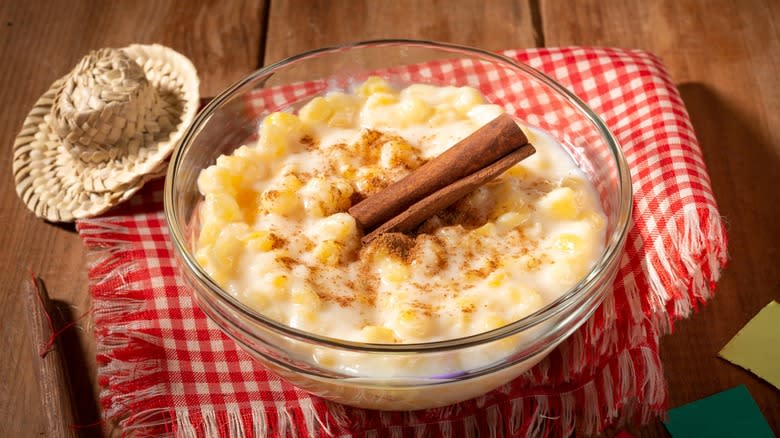
A casual cinnamon enjoyer might only be familiar with what it can do in the company of cloves, sugar, nutmeg, and other such elements. But its warming, bittersweet flavor pairs well a whole range of other tastes. If you're not ready to let go of sugary pairings, try using cinnamon to enhance the natural sweetness of fruits. Swirl some into date paste, whip it into a banana-berry smoothie, make a cinnamon-flavored plum torte, or add it to a raisin-studded couscous.
A middle ground between sweet and not-so-sweet is the combination of grapefruit and cinnamon. Other citrus fruits open the gateway to savory pairings: Try it in an orange juice marinade and have your mind blown. Naturally sweet veggies like carrots, beets, and sweet potatoes thrive in a cinnamon glaze. No one loves cinnamon as much as corn, though; Oaxacan chocolate-atole, Brazilian curau de milho, and Korean corndogs are proof. With that said, you're better off using the subtle Ceylon variety in cinnamon-forward recipes, leaving the loudmouth cassia to do the heavy lifting in dishes that use a mix of flavors.
Cinnamon Leaves Are An Overlooked Ingredient
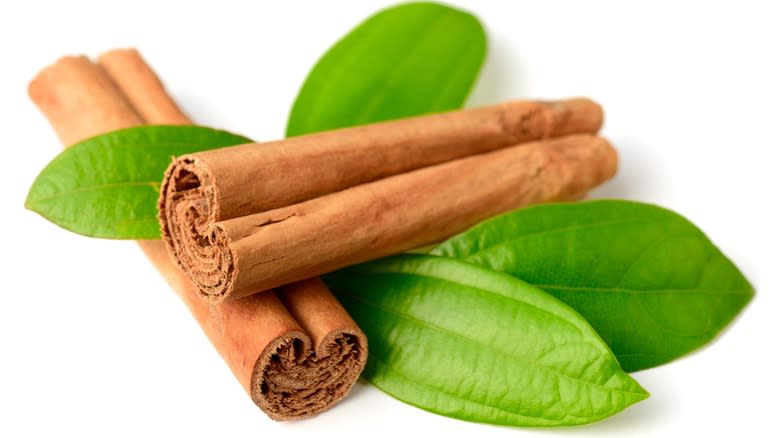
While we all understand the basics of cooking with powdered cinnamon and will gladly drop a stick or two into drinks, there's one more part of the bountiful Cinnamomum tree that can add the spice you're looking for: cinnamon leaves, also known as Indian bay leaves. As their moniker suggests, they have much in common with European bay leaves: Both are sold dry and used to infuse dishes with their subtle, complex flavors. An easy way to tell them apart? Cinnamon leaves have three veins instead of one.
Use cinnamon leaves wherever you would bay leaves, but keep in mind that their flavor leans more towards, well, cinnamon. Consider taking a leaf out of Jamaican and Indian cookbooks and incorporating them into a spice mix for jerk marinades, curries, and dals. Additionally, as their aroma is reminiscent of basil, cassia leaves can shine in tomato-based sauces like their bark brethren. If you're keen to try them in sweet dishes, incorporate them into custards during the milk-boiling stage.
Some Types Of Cinnamon Are Better Suited For Baking
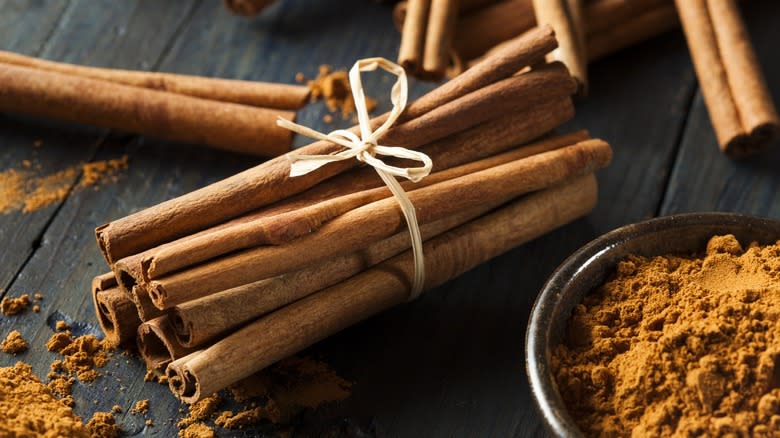
In the centuries after the Portuguese colonization of Sri Lanka and the increased exportation of cinnamon to Europe that followed, the spice became closely associated with baked goods. But when it comes to baking, not all cinnamon varieties are created equal. Despite being prized for its delicate, floral, pure cinnamon flavor (and known for the price-raising labor that goes into its production), Sri Lankan cinnamon is best used in dishes where it won't be overpowered. If your heart is set on cinnamon buns, cookies, and cakes, cassia should be your go-to choice.
Not only is cassia a more affordable option, it's also boldly flavored due to higher content of volatile oils and, consequently, a higher concentration of the cinnamaldehyde responsible for its signature flavor. These increased oils make for more even dispersion and economical use. The jury is out on whether Korintje or Saigon cassia is best suited for cinnamon rolls, so you'll have to try both and decide for yourself.
Cinnamon Affects Yeast Growth And Fermentation
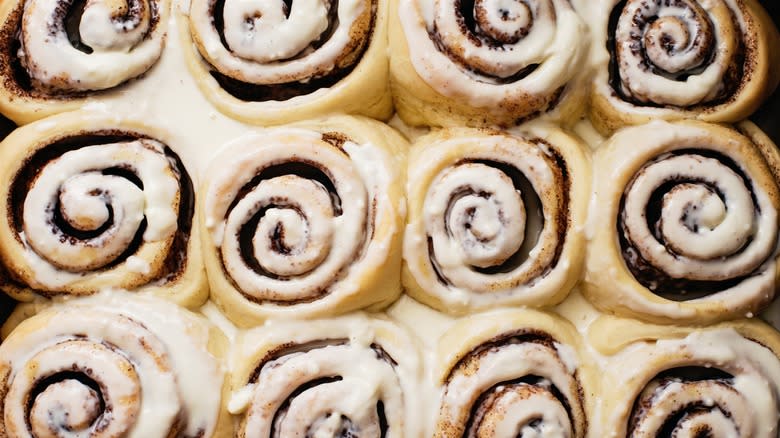
You might appreciate the anti-inflammatory health benefits of cinnamon, but you might never have considered they're precisely what makes the spice a baker's wild card. The culprit is cinnamaldehyde, cinnamon's key flavor compound, known for its antifungal prowess. As yeast is a fungus, it doesn't play well with such a nemesis -- dough may not rise properly if the two come in close contact. One way to solve this is to avoid using more than 1 teaspoon per 3 cups of flour in a yeast-based recipe or increasing the yeast content up to two times. Alternatively, avoid adding cinnamon directly to the dough and layer it separately, as you do with cinnamon rolls, or at the last moment, in the form of cinnamon sugar or syrup.
However, cinnamon can act as a natural preservative where fungal activity is undesirable -- perhaps that's why it's included in pickling spice. And who knows: Maybe we'll soon see cinnamon extracts on ingredient lists instead of synthetic preservatives.
It Works In Savory Recipes
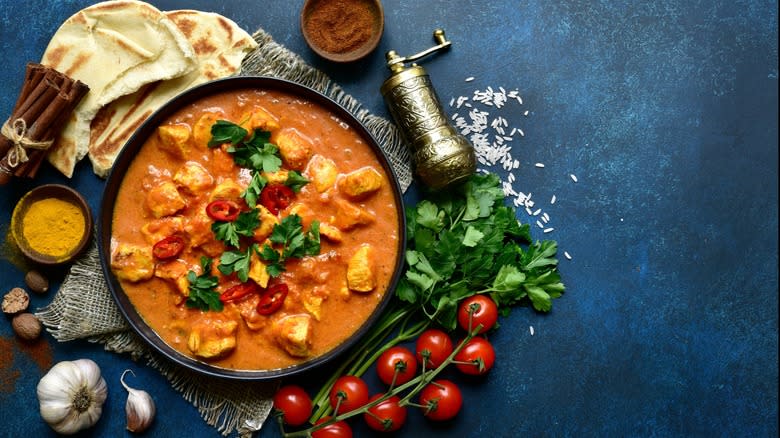
As you explore the culinary potential of cinnamon, it soon becomes apparent that the spice's uses go beyond sweet breakfast dishes and desserts. With its woodsy, earthy notes, there's plenty of depth cinnamon can lend to savory dishes, too. Used alone or in combination with other warming spices, such as ginger, turmeric, and allspice, it can transform your go-to meals or take you on a journey through new cuisines. Use boldly flavored Vietnamese cinnamon if you can get your hands on it in savory dishes; otherwise, any cassia will do.
Ready to give burgers a cinnamon boost? Pair it with chipotle or smoked paprika for full-bodied smoky flavor. For a new take on refried beans, pound them with a teaspoon of powdered cinnamon or use a whole stick to flavor the cooking water, if starting from scratch. Predictably, cinnamon works wonders in wintertime comfort foods, especially those containing sweet veggies, like pumpkin chili or corn chowder. Finally, it can deepen the sweetness and acidity of tomato sauces.
Its Versatility Is Reflected In World Cuisines
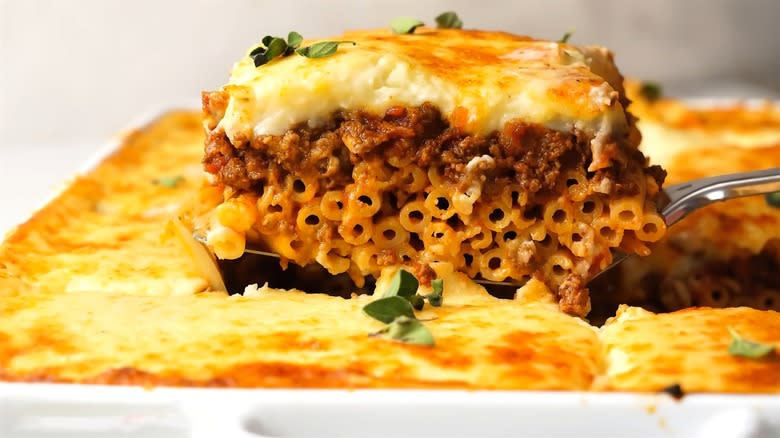
Adventurous cooks in search of new ways to incorporate cinnamon into their repertoire should look to various cuisines around the world. The ancient spice has permeated many sweet and savory dishes from a number of foodways over the many centuries. If you love to experiment with spices, you could start by creating your own cinnamon-forward blends, like Persian advieh, Chinese five-spice powder, and Indian garam masala. Those keen on keeping cinnamon in the sweet realm should try out dishes like cinnamon babka, German zimtsterne, and kanelglass, a Swedish frozen dessert that goes perfectly with cinnamon-laced apple pie.
Have some leftover cinnamon sticks? Use them in Filipino adobo or Vietnamese pho. Whole or ground, cinnamon works in many savory soups, like the tomato-based Moroccan harira and those made from fruits and wine. Speaking of tomatoes and wine, let's not forget about pastitsio, a Greek lasagna that effortlessly pairs cinnamon and meat. Try out many different recipes, and you'll surely find one that hits the spot.
Cinnamon Shines In Drinks
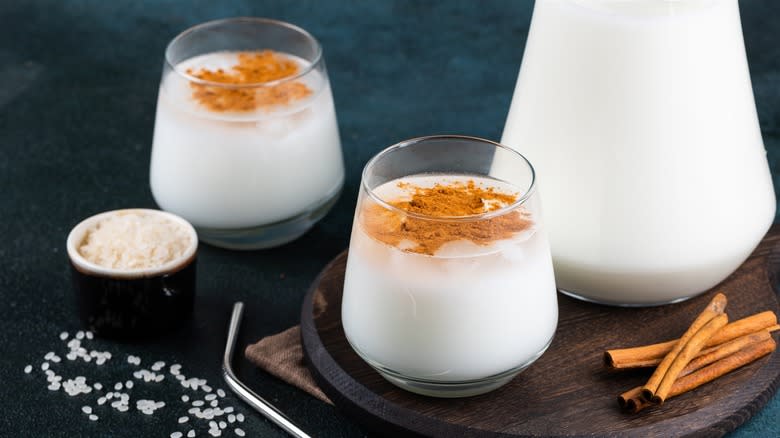
One of the easiest ways to get your daily dose of cinnamon is to drink it. It can be as simple as adding it to your morning coffee brew or steeping the sticks in hot water to make cinnamon tea. But you don't have to stop there. Specialty drinks, like pumpkin spice lattes and masala chai, wouldn't be the same without cinnamon's warming undertones, and nothing says "wintertime festivities" quite like cinnamon-laced mulled wine and hot toddies. On the other end of the spectrum, there's refreshingly creamy horchata and effervescent spiced apple kombucha.
However, you must remember that ground cinnamon is pulverized tree bark, so it won't completely dissolve in drinks. You can overcome this problem by infusing its flavor into water or neutral alcohol or putting a cinnamon twist on simple syrup by letting the sticks rest in it for several hours. Once you've got your liquid cinnamon, use it to create balance by making bitter drinks taste sweeter and warmer, and to highlight the natural sweetness of fruit-based beverages.
Cinnamon Went Dangerously Viral In The 21st Century
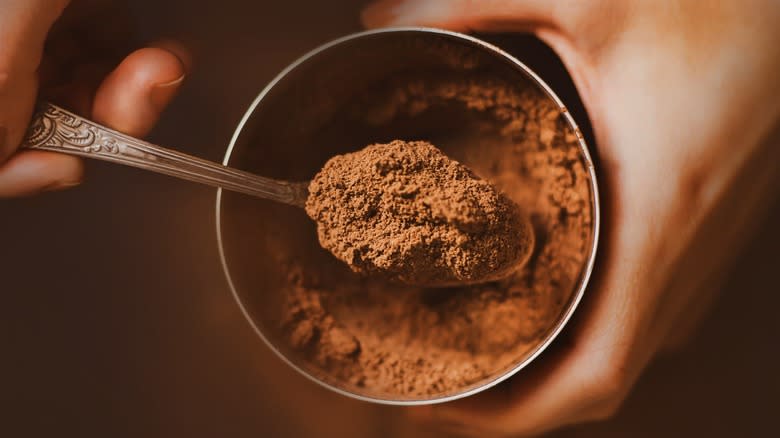
Humans have been obsessed with cinnamon since the dawn of time. If the concept of virality were around back then, it probably would have been one of the first foods to fall into this category. People have given it sacred meanings, constructed incredible myths around it, and celebrated it as a medicinal and culinary miracle. Over the centuries, many have suffered and died in their quest to find, produce, or distribute it. But in the 21st century, it gained a whole new level of notoriety.
In the mid-aughts, almost as soon as YouTube came around, videos of people who'd been dared to swallow a tablespoon of cinnamon started circulating the Internet. The infamous "cinnamon challenge" wasn't just painful to watch -- it was intensely painful to experience. Inhaling pulverized tree bark causes a gag reflex and a notorious bout of "dragon breath" as the body desperately tries to expel the irritant. For some, it had fatal consequences. Needless to say, it's a relief this trend is long forgotten.
You Can Substitute It In A Pinch
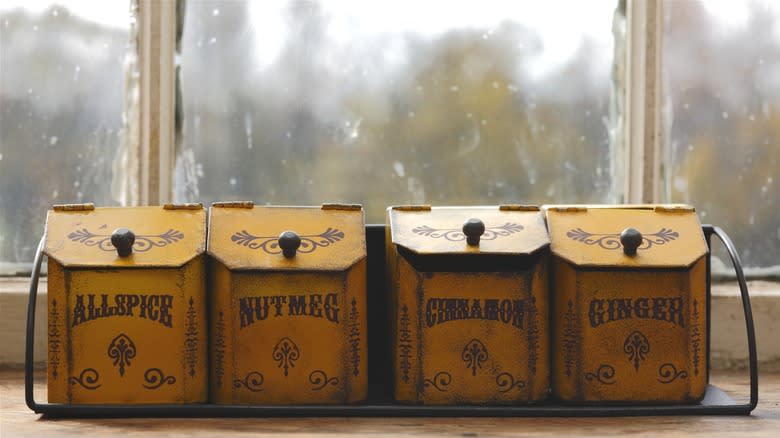
Cinnamon has a unique, easily recognizable flavor that seems inseparable from the dishes we've come to associate it with. Fortunately, it's often used with other warming spices, so if you find yourself out of cinnamon, they can come to the rescue. While they lack its signature cinnamaldehyde, these ingredients can still mimic its bittersweet and spicy flavor profile in a pinch.
One of the best cinnamon substitutes is nutmeg. Depending on the recipe, you could do a full swap or reduce its quantity to a quarter of the required amount of cinnamon. Powdered cardamom and ginger can replace cinnamon in sweet and savory recipes using a 1:1 ratio. Allspice -- aptly named for its clove, cinnamon, ginger, and black pepper flavors -- is more potent than cinnamon, so a light-handed approach is advised. Finally, premade blends, like apple pie spice, cinnamon sugar, and pumpkin pie seasoning, all do a stellar job in sweet recipes. However, you'll need to adjust the amount of remaining sugar and flavorings.
It's Been Trademarked By Cinnabon
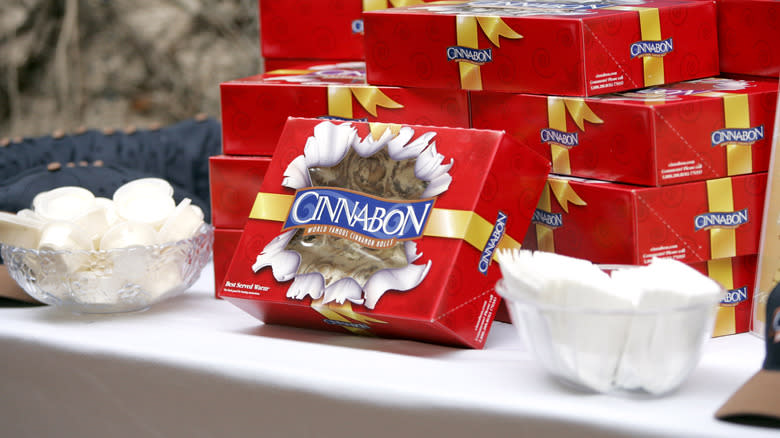
Most food industry secrets, like KFC's 11 herbs and spices or Coca-Cola's ingredient list, are strictly guarded and shrouded in mystery. But in the case of Cinnabon, the secret ingredient is impossible to hide. Not only is cinnamon the key to its signature rolls, it's also responsible for the irresistible scent we associate with the chain -- through no small effort of their marketing team's part. The tantalizing aroma is wafted strategically, ensuring it lingers in the air.
But though you're likely familiar with the experience of being lured into a Cinnabon and returning to your senses only after you've eaten, what you might not know is that Cinnabon uses a special cinnamon variety that makes their buns irresistible. The founders' quest for the perfect flavor led to the discovery of the unique, sweet-smelling Korintje cinnamon from Sumatra. While similar varieties are available online, Cinnabon has trademarked its own unique Makara blend, leaving us to savor its aroma and flavor while pondering the mystery behind its indulgent allure.
Read the original article on Tasting Table

